We found 94961 price guide item(s) matching your search
There are 94961 lots that match your search criteria. Subscribe now to get instant access to the full price guide service.
Click here to subscribe- List
- Grid
-
94961 item(s)/page
A FOLIO FROM THE HOLY QUR`AN, in Arabic, the text covering part of surah 21"The Prophets" from the last two words at the end of verse 35 to midway through the verse 44. There are 13 lines of text in black ink and the script type in Muhaqqaq, verse endings marked with gold rosettes with a five verse marker appearing as a large roundel at the top of the left hand margin and a ten verse marker as a large medallion beneath. At the top of the folio the word waqf is written in a different hand indicating that the folio or the copy of the Qur`an from which this was taken was once part of an Islamic endowment 1300-1500.
A FOLIO FROM THE HOLY QUR`AN, in Arabic, The text covering part of surah 11, the prophet "Hûd", from the beginning of verse 6 to the end of verse 12. The script type being in Naskh. Verse endings marked with small gold roundels.In the left hand margin there is a rosette in which is written the number 12 indicating that the 12th part of the Qur`an begins at the top of this page 1600-1800.
A FOLIO FROM THE HOLY QUR`AN,in Arabic, the text covering part of sûrah 30, "al-Rûm" or The Byzantines, from the beginning of verse 53 to the end of the chapter heading, that of "Luqmân" appearing in gold script at the foot of the page. The script type in Muhaqqaq. Verse endings marked with gold rosettes with blue centres. The name of god on one occasion is written in gold within the text and the letter alif has been written in red on some occasions. Marks for the rules of recitation are written in red and blue throughout the text. The indication of the end of a quarter of a ḥizb ( 60th part of the Qur`an ) is written in red on the left margin. In the gold sûrah heading at the foot of the page, the number of the verses for sûrah 31 are mentioned according to the Kûfan, Basran, and Syrian schools 1300-1500.
A FOLIO FROM THE HOLY QUR`AN, In Arabic, the text covering part of the sûrahs 8 and 9, ``al-Anfâl" and "al-Tawbah" and contains the last verse of the former, the last three words of which are written in gold, and the sûrah heading and first two verses of the latter. The script type is Muḥaqqaq in black ink for the text and the sûrah heading is in white Thuluth in a gold cloud band on a blue, gold and red folial and floral arabesque. Verse endings are indicated by gold rosettes. A roundel on the right margin indicates the position of a quarter of one-sixtieth part of the Qur`an, date range 1400-1600.
A FOLIO FROM THE HOLY QUR`AN in Arabic. The text covers part of the second sūrah entitled "The Heifer" from verse 240 and breaks off towards the end of verse 246. 14 lines of Muhaqqaq-type script with a Persian interlinear translation of the text. Verse endings are small rosettes and a 60th-part marker is to be seen in the left margin, 1400-1600 Iran?.
A FOLIO FROM THE HOLY QUR`AN in Arabic. The text covers verses from the end of verse 91 of the 15th chapter and breaks of before the end of the 2nd verse of the 16th chapter. A roundel in the right margin marks a division of a 60th part. Verse endings are marked with gold rosettes with green centres and red and purple dots. The main script type is Naskh in black ink with the chapter heading of chapter 16 written in Thuluth in red ink,1600-1800.
A FOLIO FROM THE HOLY QUR`AN, covering verses 20 to 27 of the 31st sûrah "Luqmân". The folios may be contiguous or perhaps there was another folio in-between. The script type is Muḥaqqaq and verse endings are marked with rosettes with white petals and gold centres. A half-sixtieth part marker is visible in the right margin.
A FOLIO FROM THE HOLY QUR`AN in Arabic. Date range: 1600-1800, Ottoman turkey? 11 lines of Naskh script in black ink. The text covers part of sūrah 6 "The Livestock" from the middle of verse 12 until the middle of verse 19. Verse endings are marked with gold rosettes with coloured dots. A vase of flowers decorates the right margin.
Darwin (Charles). The Voyage of HMS Beagle, introduction by Richard Keynes, Folio Society 2003, picture boards, slip case, together with Ruskin (John), The Stones of Venice, edited and introduced by Jan Morris, Folio Society 2001, picture boards, slip case, and Stevenson (Tom), Sotheby`s World Wine Encyclopaedia, London 1998. (3)
POBLACHT NA HEIREANN. WAR NEWS. A good collection of 12 numbers, 1922-23, including nos. 12, 15, 23, 27, 28, 29, 33, 75, 86, 93, 100, 148. Folio, printed one side only, a few scuffed and/or chipped but in good condition generally. Much interesting content including death of Harry Boland, trial of Erskine Childers etc.; also a copy of Correspondence relating to the Proposals of His Majesty's Government for an Irish Settlement, 1921. As a collection.
'BOSS' CROKER'S CODICIL Cremin vs. Croker. Stenographer's Report [Dublin 1929]. Original typescript, carbon copy, 467, [75] pp folio, a full transcript including the evidence and cross-examination of Croker's widow Bula [Beulah] and other witnesses, Mr. Justice O'Byrne's charge to the jury, etc. Richard 'Boss' Croker [1841-1922], the legendary boss of Tammany Hall, was born in Clonakilty. After his retirement he returned to Ireland, where he trained the Derby winner Orby, and lived at Glencairn near Sandyford, later the residence of the British Ambassador. After the death of his first wife in 1914 he married a young woman from an entertainment background, who claimed to be a full Cherokee princess, and settled all his property on his new wife. He was then sued by three of his sons from his first marriage, who sought Court protection for their inheritance, claiming he was 'besotted' by the young woman. They lost their case. The courts decided his will was subject to Irish law, which at that time did not protect his family's inheritance rights. There were a number of subsidiary actions, of which this was the last. It concerned a codicil to Croker's will, a so-called 'trip will' signed before a transatlantic voyage, which left substantial amounts to several Irish servants as well as to his Dublin solicitor, John J. McDonald. The codicil was supposedly revoked and was not implemented. This action against Mrs. Croker was taken by one of the beneficiaries, Fanny (Harmon) Cremin, seeking payment of her legacy. The transcript is from the office of the solicitor John McDonald, a witness in the case, and bears annotations probably in his hand. There is a full index at front. Mrs.Croker's evidence is at pp. 220-287, her cross-examination at 288-374, the judge's summing up after p. 467. There are many references to the evidence given in the earlier actions. Probably a unique surviving record.
DR. TIERNEY VS. THE R.A.F. HIGH COURT OF JUSTICE [DUBLIN]. Kirkwood-Hackett .v. Tierney. Stenographer's Transcript. John J. McDonald & Co., Solicitors, 116 Grafton Str., Dublin [1949]. Bound typescript (carbon copy), 301 pp folio. With some ms. corrections and underlinings. The case concerned Walter Kirkwood-Hackett, a decorated RAF officer during World War II, who later obtained a British grant to study at UCD. His grant was conditional on passing his examinations, but he collected a grant cheque from the University office after failing one paper. Dr.Michael Tierney, UCD's President, said he must recover the cheque from the bank, and allegedly accused him of obtaining it under false pretences. Kirkwood-Hackett sued for defamation. The case ran for five days before Mr. Justice Maguire and a jury. With full reports of the evidence and the Judge's charge, including a long and entertaining cross-examination of Dr. Tierney at pp. 133-213, and an interesting discussion of legal privilege and malice. Flying Officer Walter Kirkwood-Hackett DFC served with the RAF's 97 Squadron as a gunnery leader. After surviving the worst that Hitler and Goering could do, he was doubtless surprised to be pulled up by Dr. Tierney. A rare document.
BORLASE, Edmund. The Reduction of Ireland -London: 1675. Folio. Provenance: The Elden Hall bookplate, good in old calf rebacked. Wing B 3768. The period covered is that leading up to "the grand eruption the 23 of October, 1641" and thereafter through to the Act of Settlement of 1662. The author attempts to exculpate his uncle Sir John Borlase from any blame for what transpired. Sweeney 482 quoting the edition prepared for the Dublin bookseller Joseph Howes. Provenance: The estate of Tony Sweeney
H., R. Remarks on the life and death of the famed Mr. Blood - London: 1680. Folio. pp. [i], 14, 4. A very good copy in modern quarter morocco. Wing H 114. A splendid rascal, who forfeited his Irish estates at the Restoration. He subsequently stole some of the crown jewels but, after being arrested, managed to gain access to the presence of Charles II and so charmed the King that his lands were restored to him. Sweeney 2204 quoting the 1st edition of the same year. Provenance: The estate of Tony Sweeney
[KEMPIS, Thomas A.] Opera Thomae à Campis, Cognomento Malleoli, viri Pientissimi et Religiosissimi sub Canone Diui Partis Augustini, Aucta, et Diligentius recognita, suaque serie reposita. Paris: A Pud Joannem Roigny, 1549. Folio. [xxii], 203, [vi], 82. Later full tree calf with minor wear. Provenance: bookplate of Bishop Phillpotts Library, Truro on front pastedown. A very good copy with occasional inoffensive water stain. All edges red. Provenance: The estate of Tony Sweeney
MISSALE ROMANUM EX DECRETOR Sacrosanctii Concilii Tridentini restitutum PiiV Pont. Max Antwerp (ex officinia Plantiniana Balthasaris Moreti) 1634 (folio) Black and red type, ruled borders and music, black morocco gilt with brass clasps, worn A fine alter missal, with excellent impressions of the plates Provenance: The estate of Tony Sweeney
[SHELTON, Thomas] The History of the Valorous and Witty-Knight-Errant, Don-Quixote, of the Mancha. Translated out of the Spanish, now newly corrected and amended. Later engraved portrait of Miguel de Cervantes preceding titlepage. Small folio. pp. [xvi], 274. The Kenneth Rapoport copy. Later half brown morocco. All edges gilt. A very good copy. Provenance: The estate of Tony Sweeney
1501 [HROSWITHA of GANDERSHEIM] Opera Hrosvite illustris virginis et monialis Germane gente Saxonica orte nuper a Conrado Celte inventa. Norunbergæ: Sub privilegio sodalitis Celticæ, 1501. Small folio. 82 leaves, without pagination. Hrotsvitha (c. 935-1002), also known as Hroswitha, Hrotsvit, Hrosvit, and Roswitha, was a 10th-century German secular canoness, as well as a dramatist and poet who lived and worked in Abbey of Gandersheim, in modern-day Lower Saxony, a community of secular canonesses. She was noted for her great learning and was introduced to Roman Writers by Gerberg. Hrotsvit's work shows familiarity, not only with the Church fathers, but also with Classical poetry, including Virgil, Horace, Ovid, Plautus and Terence (on whom her own verse was modelled). Several of her plays draw on the so-called apocryphal gospels. Her works form part of the Ottonian Renaissance. The Benedictine Rule was relaxed for her and other aristocratic women who joined the order; they were not required to take the vow of poverty. Two Abbesses in her time were nieces of the ruling Emperor with the status of Imperial Princes. The frontispiece of the book, a Durer engraving, shows Hroswitha presenting her manuscript to the Emperor Otto I. The book was edited and seen through the press by the Imperial Poet Laureate, Conrad Celtes, who in 1493 had discovered a copy, still extanct, of the Mss in the Benedictine Monastery of St. Emmeram in Regensburg. Hrosvit divided her work herself into three books. The Book of Legends contained eight legends - with the exception of Gangolf - in dactylic hexameter - the writing style that is most prominent in poetry and can be found in Homer's Iliad and Odyssey. Her plays feature the chastity and perseverance of Christian women and contrast these to the perceived Latin portrayal of women as weak and emotional. Her Passio Sancti Pelagii is derived, she says, from an eyewitness to the martyrdom of Pelagius of Cordova. Her name, as she herself attests, is Saxon for "strong voice." Hroswitha wrote in Latin, and is considered by some to be the first person since antiquity to compose drama in the Latin West Provenance: The estate of Tony Sweeney
1625 The Prayer, and administration of the Sacraments. And other Rites and Ceremonies of the Church of England - Imprinted at London by Bonham Norton, and John Bill: 1625. Folio. The first edition of the Charles I revision. With many woodcut initials, black letter. Engraved titlepage printed in red and black. Bound in contemporary full calf, covers framed by five gilt fillets enclosing in the centre a large grolieresque gilt central lozenge. A very good copy. This copy was in turn used by those in the Church of Ireland who were desirous for a complete revision of the Booke of Common Prayer to coincide with the 1871 Act of Disestablishment. These suggestions are in red ink. Those involved however lost out against the traditionalists which included J B Garstin. Spine expertly rebacked preserving original. Loosely inserted is a four page printed leaflet entitled 'a form of prayer and Thanksgiving' for "the merciful preservation of the Queen from the atrocious and treasonable attempt against her … on Monday, the thirtieth of May, 1842" - to be used in all Churches and chapels in Ireland. Dublin: printed by George and John Grierson, 1842. Provenance: from the library of WR Westoppe Roberts and Sidney Young with their armorial bookplates. BOUND WITH CHURCH OF ENGLAND PRINTED BOOK: The Psalter, or Pslames of David, after the translation of the Great Bible, pointed as it shall be said or sung in churches - Imprinted at London by Bonham Norton, and John Bill. Folio with many woodcut initials. According to a note in this copy, the emblem of St Luke, a Bull, appears on the title page by mistake instead of the Lion of St. Mark. Binding: Contemporary calf, gilt, re-backed. Provenance: Bookplates of "Sidney Young, citizen and barber of London" and "W R Westropp Roberts, Senior Fellow, Trinity College Dublin". and gifted to his daughter Dorothy and her husband Dan Conner. Provenance: The estate of Tony Sweeney
ROYAL COPY DIONYSIUS PERIEGETES / EUSTATHIUS / ESTIENNE Henry. Situs Orbis Descripto - [Geneva], 1577. pp. [viii], 158, [24], 47, 152. Small folio. Contemporary full worn calf. A very good copy. This copy of the centenary edition carries the gilt arms of Henry Prince of Wales (1594 -1612), the eldest son of James I, from whose library it derives. This collection of more than a thousand volumes was built up by his tutor and librarian Edward Wright and the majority still form part of the British Library. Nicholas Poole-Wilson cataloguing this work for Bernard Quaritch Ltd in 2005 noted how, after the premature death brought about through typhoid fever of the teenage Prince Henry, "the books passed into the 'Old Royal Library', given to the British Museum in 1753 by George II. This copy was sold as a duplicate by the Museum in 1804; it has the Museum's library and duplicate sale stamps on verso of title, the former in blue denoting royal provenance." Nicholas goes on to quote what Schreiber had written of the text: "Estienne's important and beautiful edition of these Green and Roman geographical texts, published (as he states in the preface) his father's edition of Dionysius (1547) had long become unobtainable. Henri has made important additions to his to his father's edition, which include his own Latin translation of the geographical poem of Dionysius, with his notes on the text and on the commentary of Eustathius: he also prints the three Roman geographical tracts by POMPONIUS MELA (with the annotations of OLIVARIUS), SOLINUS (with the textual comments of DELRIO), and AETHICUS ISTER (with the notes of Josias Simler who had published the editio princeps two years earlier.)". Provenance: The estate of Tony Sweeney
1580 [BARET, John. / FLEMING, Alexander] An Alvearie or Quadruple Dictionarie, containing four sundrie tongues: namely English, Latin, Greeke and French. Newlie enriched with varietie of wordes, phrases, proverbs, and divers lightsome observations of grammar. -London: Printed by Henry Denham, 1580. Folio. Partly black letter. Antique style calf by Charles Gledhill. Lacking A1 (blank) but a clean and pleasing copy. The 2nd of two STC printings: - 1411. First published in 1573 as a three-language dictionary and in this second edition edited by Alexander Fleming. In his address "To the Reader" Baret describes the way in which his dictionary originated: "About eighteene yeeres agone, having pupils at Cambridge studious of the Latine tongue. I used them often to write Epistles and Theames together, and dailie to translate some peece of English into Latin, for the morer speedie and easie attaining of the same. And after we had begun, perceiving what great trouble it was to come running to me for everie worde they missed (knowing then of no other Dictionarie to helpe us, but Sir Thomas Eliot's Librarie, which was come out a little before:) I appointed them certaine leaves of the same booke everie daie to write the English before the Latin, & likewise to gather a number of fine phrases out of Cicero, Terence, Caesar, Livie, etc. & to set them under severall titles, for the more readie finding them again at their neede. Thus within a yeere, or two, they had gathered together a great volume, which (for the apt similitude between the good Scholiers and diligent Bees in gathering their ware and honie into their Hive) I called them their Alvearie." The author took pride in the methodology he adopted pointing out how "By the tables you may contrariwise finde out the most necessarie wordes placed before the alphabet, whatsoever are to be found in anie dictionarie: which tables also serving for lexicons, to lead the learner unto the English of such hard wordes as are often read in authors, being faithfullie examined are truelie numbered. Verie profitable for such as are desirous of anie of those Languages. Provenance: The estate of Tony Sweeney
ROGER MORTIMER The History of the Darby Stakes (new edition) London 1973 in a fine green morocco binding by Asprey - Arthur Fitzgerald, The Arc, champions edition, folio on royal blue and green morocco slip case - John Aiscan, Ribot Echzell, full niger, in slip case - Jennifer Churchill, etc., Great Thoroughbred Sires of the World, Underdale (S. Australia) 2006, dust jackets Provenance: The estate of Tony Sweeney
TONY SWEENEY The Arranmore Connections, folio, 2007, privately printed "In the hope that the descriptive information recorded herein will prove to be of some assistance to the collectors of the third millennium". in slipcase with printed record of the twenty-five recipients Provenance: The estate of Tony Sweeney
Bianchini Ferier - A folio of assorted floral pattern French preparatory silk scarf designs, all hand coloured with either pastels, watercolours or ink, to include such designs as 4561 with tube lined butterflies on a pastel ground, 4559 pastel print, 4544 pastel shell pattern, 4501 `Faille Shaine Foaxs` with pink flowers and 4541 with green, pink and purple flowers (10) Provenance: purchased from the Christie`s 25th - 27th July 2001 Bianchini Textiles sale.
The Art of the Illustrator by Percy V Bradshaw, issued by the Press Art School, Tudor Hall, Forest Hill, London, a boxed set of twenty folios showing the work of illustrators such as W Russell Flint, W Heath Robinson, Cyrus Cuneo, H M Bateman et al, each folio containing a biography of the artist and an example of his works shown in various stages from sketch to completion.
CHARLES IIDocument Signed - (DS)A document signed Charles R, as King, at the head, one page, folio, Whitehall, 4th February 1670/71. The manuscript document is addressed to the Attorney General and requests that he prepare a `Bill for Our Royall Signature to passe Our Great Seale of England, containing our full & Gracious Pardon` for Ambrose Baynes who stood `convicted for having forged & Published a Bond or Obligation bearing date the 20th day of November 1668`. Countersigned at the foot by 1st Earl of Arlington (1618-1685, English Statesman, Secretary of State for the Southern Department 1662-74 and Postmaster General 1667-85). With blank integral leaf. Some very light overall creasing and minor age wear.
Hurlbutt, Frank. Bristol Porcelain, pub. The Medici Society, London & Boston, 1928, 4to, mounted colour plates by the author, original green cloth; together with Bow Porcelain by the same author, pub. G. Bell & Sons Ltd., London 1926, colour and b&w plates, folio; and five other books on porcelain comprising Pottery & Porcelain by Frederick Litchfield, 6th. ed; Worcester & Worcestershire Antiquities - Descriptive Catalogue of the Museum Formed at Worcester, July 22 to 29 1862, pub. Deighton & Son 1862; Guide to the European Pottery & Porcelain in the Fitzwilliam Museum, Cambridge by Bernard Rackham, 1935; Encyclopedia of British Pottery & Porcelain Marks by Geoffrey A. Godden, rev. ed. 1991; and The New Chaffers Marks & Monograms on Pottery & Porcelain, 14th rev. ed. (7).
An impressive WWI MC & DSO medal group and two sets of miniatures, awarded to Major R. Nicholson D.S.C M.C R.A, comprising a Distinguished Service Order, a Military Cross with one bar, a 1914-15 star, a British War and a Victory medal with oak leaf, in presentation case, together with two sets of miniatures, both cased, a silver cigarette case, an Officer’s Record of Service folio, and some further paperwork (9) Major Nicholson was promoted from Lieutenant to Captain in 1918 and then from Captain to Major in 1919. The other paperwork includes two facsimile photographs and research material regarding the Major.Military Cross Gazetted 4 June 1917 Decorated 15 August 1917. 1st Bar Gazettd 4th February 1918 Decorated 19 May 1918
Alken (Henry) [The National Sports of Great Britain], first edition, second issue, aquatint title (dated 1821) and 50 aquatint plates by J.Clark after Henry Alken, all splendidly hand-coloured and in excellent condition, printed in English & French, this copy without the dual-language letterpress title-page in but with plates watermarked `1820`, 19th century bookplate of Thomas Greer on front pastedown, handsomely bound in full contemporary straight-grain morocco with blind-tooled inner border and decorative ornament contained within elaborate gilt border, spine titled in gilt with further gilt compartments within gilt-tooled raised bands, g.e., surface wear to corner some edges, small section of surface loss to upper cover near spine, [ Mellon/Podeschi 111; Schwerdt I, p.19 & IV, p. 4; Siltzer p. 70; Tooley 41], folio, Thomas McLean, 1821. "Alken`s most important work.It must always form the cornerstone of any Alken collection." Tooley, English Books with Colour Plates, p.64. Alken`s hugely popular presentation of the aristocratic pursuits of the time, resplendent with large hand-coloured aquatint depictions of popular pastimes including hunting on horseback, hawking, gun shooting, angling, horse-racing, pugilism and dressage, as well as activities that even at the time were becoming increasingly controversial such as bull-baiting and bear-baiting. This copy would seem to have been without the letterpress title for some time, perhaps even bound without, as the offsetting onto the verso of the additional title is that from the Preface.
BALLET- Hugh Stevenson; a folio album of approx. 43 water-colour sketched costume designs, some with pencilled titles, approx. 32 x 24cms. In addition to his work for the Ballet Rambert, Stevenson designed for some early Tudor Ballets, the Sadlers Wells Company & others; sold with a framed sketch by him (in gold & colour) of the dancer Tony Kelly, as 'Jupiter'. Illustrated
-
94961 item(s)/page


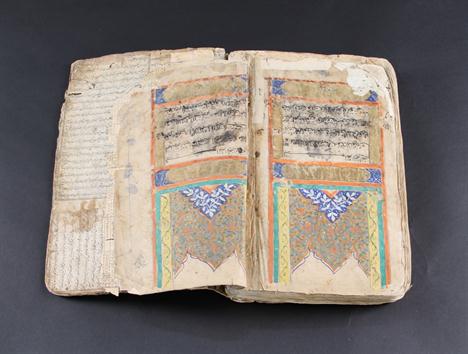




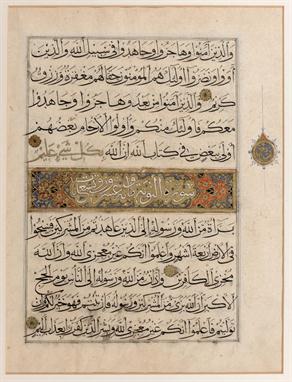








!['BOSS' CROKER'S CODICIL
Cremin vs. Croker. Stenographer's Report [Dublin 1929].
Original typescript, carbon copy, 467, [75](http://lot-images.atgmedia.com/SR/10600/2873117/83-201348123557_468x382.jpg)
![DR. TIERNEY VS. THE R.A.F.
HIGH COURT OF JUSTICE [DUBLIN]. Kirkwood-Hackett .v. Tierney. Stenographer's Transcript. John](http://lot-images.atgmedia.com/SR/10600/2873117/84-20134812368_468x382.jpg)


![H., R. Remarks on the life and death of the famed Mr. Blood - London: 1680. Folio. pp. [i], 14, 4. A very good copy in mo](http://lot-images.atgmedia.com/SR/10600/2873117/424-201348133558_468x382.jpg)
![[KEMPIS, Thomas A.] Opera Thomae à Campis, Cognomento Malleoli, viri Pientissimi et Religiosissimi sub Canone Diui Partis Au](http://lot-images.atgmedia.com/SR/10600/2873117/430-201348133715_468x382.jpg)
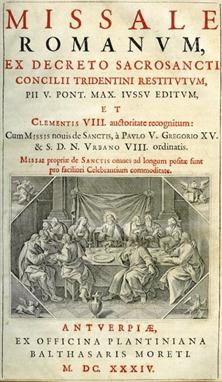
![[SHELTON, Thomas] The History of the Valorous and Witty-Knight-Errant, Don-Quixote, of the Mancha. Translated out of the Span](http://lot-images.atgmedia.com/SR/10600/2873117/453-201348134328_468x382.jpg)
![1501
[HROSWITHA of GANDERSHEIM] Opera Hrosvite illustris virginis et monialis Germane gente Saxonica orte nuper a Conrado C](http://lot-images.atgmedia.com/SR/10600/2873117/470-201348134518_468x382.jpg)

![ROYAL COPY
DIONYSIUS PERIEGETES / EUSTATHIUS / ESTIENNE Henry. Situs Orbis Descripto - [Geneva], 1577. pp. [viii], 158, [24]](http://lot-images.atgmedia.com/SR/10600/2873117/490-201348135012_468x382.jpg)
![1580
[BARET, John. / FLEMING, Alexander] An Alvearie or Quadruple Dictionarie, containing four sundrie tongues: namely Englis](http://lot-images.atgmedia.com/SR/10600/2873117/491-201348135036_468x382.jpg)




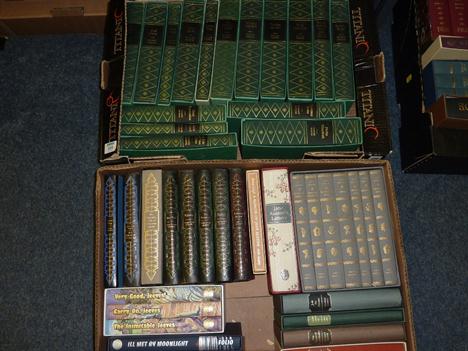








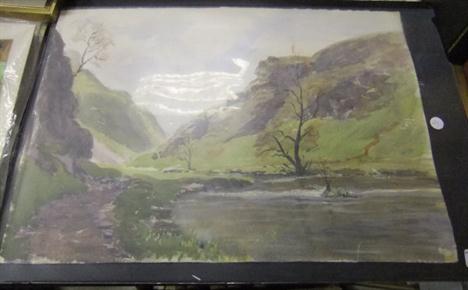



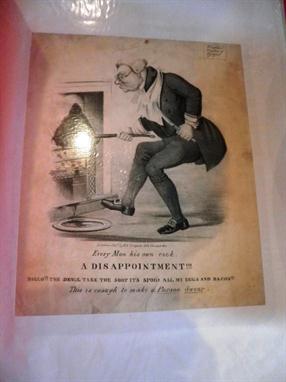


![Alken (Henry) [The National Sports of Great Britain], first edition, second issue, aquatint title (dated 1821) and 50 aquatin](http://lot-images.atgmedia.com/SR/10011/2877885/93-201332717252_468x382.jpg)
